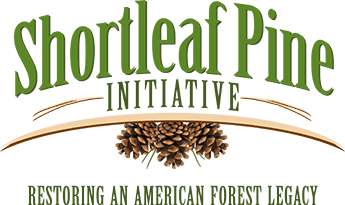|
Shortleaf research, newspaper articles, fact sheets, conference proceedings, literature reviews, and brochures.
Pine Hardwood StandSchulte, B., & Buongiorno, J. (2004). A growth and yield model for naturally-regenerated mixed shortleaf pine forests in the southern United States of America. International Forestry Review, 6(1), 19-29. Retrieved from http://www.bioone.org/doi/abs/10.1505/ifor.6.1.19.32056  Amounts and spatial distribution of downed woody debris, snags, windthrow, and forest floor mass within streamside management zones occurring in shortleaf pine stands five years after harvesting
Amounts and spatial distribution of downed woody debris, snags, windthrow, and forest floor mass within streamside management zones occurring in shortleaf pine stands five years after harvesting
Liechty, H. (2007). Amounts and spatial distribution of downed woody debris, snags, windthrow, and forest floor mass within streamside management zones occurring in shortleaf pine stands five years after harvesting. Shortleaf pine restoration and ecology in the Ozarks: proceedings of a symposium; 2006 November 7-9; Springfield, MO. Northern Research Station, General Technical Report NRS-P-15. Retrieved from https://www.fs.fed.us/nrs/pubs/gtr/gtr_nrs-P-15.pdf#page=172 Lhotka, J. M., & Loewenstein, E. F. (2011). An individual-tree diameter growth model for managed uneven-aged oak-shortleaf pine stands in the Ozark Highlands of Missouri, USA. Forest Ecology and Management, 261(3), 770-778. Retrieved from http://www.sciencedirect.com/science/article/pii/S0378112710007085  Changes in Organic Matter And Nutrients in Forest Floor After Applying Several Reproductive Cutting Methods in Shortleaf Pine-Hardwood Stands
Changes in Organic Matter And Nutrients in Forest Floor After Applying Several Reproductive Cutting Methods in Shortleaf Pine-Hardwood Stands
Liechty, H. O., & Shelton, M. G. (2004). Changes in Organic Matter And Nutrients in Forest Floor After Applying Several Reproductive Cutting Methods in Shortleaf Pine-Hardwood Stands. Southern Research Station, General Technical Report SRS-74. Retrieved from https://www.srs.fs.usda.gov/pubs/gtr/gtr_srs074/gtr_srs074-liechty001.pdf Williams, R.A. (1998) Effects of fire on shortleaf and loblolly pine reproduction and its potential use in shortleaf/oak/hickory ecosystem restoration. Proceedings of the Ninth Biennial Southern Silvicultural Research Conference. Gen. Tech. Rep. SRS-20. Asheville, NC: U.S. Department of Agriculture, Forest Service, Southern Research Station, p. 321-325. Retrieved from https://www.srs.fs.usda.gov/pubs/gtr/gtr_srs020/index.htm Shelton, M. G. (2004). Effects of Retaining a Hardwood Component During the Application of Uneven-Aged Silviculture in a Shortleaf Pine-Oak Stand: 6-Year Results. Southern Research Station, General Technical Report SRS-74. Retrieved from http://www.treesearch.fs.fed.us/pubs/6524 Elliott, K. J., & Vose, J. M. (2005). Effects of understory prescribed burning on shortleaf pine (Pinus echinata Mill.)/mixed-hardwood forests. The Journal of the Torrey Botanical Society, 132(2), 236-251. Retrieved from https://www.fs.usda.gov/treesearch/pubs/22217 Jones, M. D., & Bowles, M. L. (2012). Fire chronology and windstorm effects on persistence of a disjunct oak-shortleaf pine community. Proceedings of the 4th fire in eastern oak forests conference; 2011 May 17-19; Springfield, MO. Northern Research Station, General Technical Report NRS-P-102. Retrieved from https://www.fs.usda.gov/treesearch/pubs/42134 Flatley, W. T., Lafon, C. W., Grissino-Mayer, H. D., & LaForest, L. B. (2013). Fire history, related to climate and land use in three southern Appalachian landscapes in the eastern United States. Ecological applications, 23(6), 1250-1266. Retrieved from http://www.esajournals.org/doi/abs/10.1890/12-1752.1 LaForest, L. B. (2012). Fire Regimes of Lower-elevation Forests in Great Smoky Mountains National Park, Tennessee, USA. University of Tennessee-Knoxville: Tennessee Research and Creative Exchange, Doctoral Dissertations. Retrieved from http://trace.tennessee.edu/utk_graddiss/1388/ |

